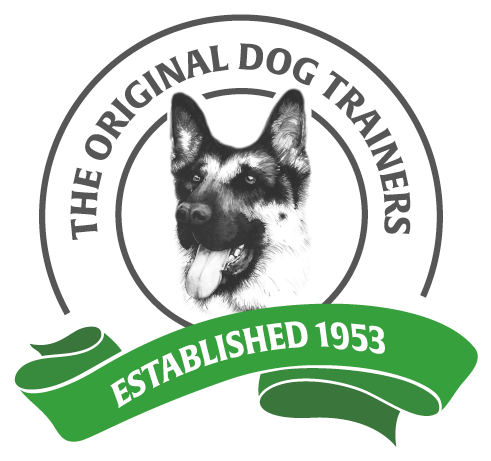General Dog Training Products & Accessories FAQs
At Karenswood, we understand that training your dog is as much about building trust and connection as it is about teaching skills. Whether you’re just starting out with your pet or looking to refine your professional dog training approach, having the right tools and knowledge can make all the difference.
This FAQ page is here to answer your most common questions about dog training products and accessories, from the must haves to the nice to haves, and everything in between. With over 70 years of expertise in canine training, we’re here to help you and your dog succeed, every step of the way.
Essentials & Getting Started
To get started, you’ll need a comfy collar or harness, a sturdy lead, and a clicker or a clear marker word. Don’t forget plenty of small, tasty treats, your dog’s favorite currency! A crate or puppy pen is a lifesaver for house training, and a treat pouch keeps rewards within easy reach. These essentials are your toolkit for teaching recall, obedience, and good manners.
Optional extras can make a world of difference! Long lines are great for recall practice, while interactive puzzle toys and tug ropes keep your dog mentally engaged. Target sticks are handy for advanced training. For puppies, teething toys, playpens, and training mats are especially helpful.
Start with the basics: a simple flat collar or harness, a standard 6-foot lead, and some healthy treats. You can get creative, use towels as training mats or make DIY puzzle feeders from cardboard boxes. Training on a budget doesn’t mean cutting corners, it’s about consistency and creativity.
Absolutely. Strong breeds benefit from no-pull harnesses or heavy-duty leads, while smaller dogs need lightweight gear. Long coated breeds do better with wider collars to avoid tangles, and flat faced breeds should steer clear of restrictive collars altogether.
Collars, Harnesses & Leads
- Flat collars: Perfect for everyday use and safe for most dogs.
- Martingale collars: Designed to tighten slightly, making them ideal for escape artists like greyhounds.
- Slip leads/collars: Handy for quick use but require experienced handling to avoid misuse.
Look for a front-clip harness with padded straps and sturdy buckles. A good design redirects pulling without restricting your dog’s natural movement, comfort and control in one package.
Retractable leads aren’t ideal for training. They encourage pulling and reduce your control. Stick to a 6-foot lead for obedience work and a 15–30ft long line for recall practice.
Clickers, Treats & Rewards
A clicker is precise and consistent, making it crystal clear to your dog what they’re being rewarded for. A verbal marker like “Yes!” works too, but tone can vary. Many trainers prefer starting with a clicker for its reliability.
- Box clickers: Loud and distinct, great for outdoor training.
- Button clickers: Easy to use with one hand.
- Quiet clickers: Perfect for noise-sensitive dogs or indoor sessions.
Choose a pouch that clips to your belt, opens easily, and holds enough treats for a session. Washable or silicone options are great for keeping fresh food rewards handy and mess-free.
Crates, Pens & Home Training
Measure your dog from nose to tail base and from floor to head, then add a few centimetres. The crate should be big enough for your dog to stand, turn around, and lie down comfortably, but not so large that they can use one end as a toilet.
Both are excellent tools. Pens create a secure play area, while baby gates block off certain rooms. Many owners find using both together works best.
Covers make the crate feel like a cosy den, while non-chew mats add comfort. Clip-on bowls are great for preventing spills. Avoid soft bedding for unsupervised puppies who might chew.
Enrichment & Interactive Gear
Look for toys with sliding panels, multiple compartments, or adjustable difficulty levels to keep dogs engaged and thinking.
Absolutely! They redirect chewing, relieve boredom, and slow down fast eaters. Plus, they’re a great way to reward calm, focused behaviour.
Yes! Tug games are fantastic for building focus and teaching commands like “Take it” and “Drop it.” Just be sure to set clear rules for safe play.
Outdoor, Travel & Safety
A 15–30ft long line paired with a comfortable harness gives your dog freedom to explore while keeping them safely under control.
Crash-tested harnesses that meet safety standards are a must. Brands like Ruffwear and Sleepypod are highly regarded for their reliability.
Yes, as long as they attach securely to a waist belt and include a shock-absorbing section. They’re perfect for keeping your dog close while you stay active.
LED collars, reflective harnesses, and clip-on lights make your dog visible on dark walks. Rechargeable options are eco-friendly and convenient.
Troubleshooting
Take it slow. Let your dog sniff and explore the gear first, rewarding calm behaviour. Gradually increase the time they wear it, always pairing it with positive experiences.
Opt for chew-resistant or chain-reinforced leads, and redirect their chewing to appropriate toys.
Start with simple puzzles to build their confidence, then gradually increase the difficulty as they get the hang of it.
Make the crate a positive space by adding treats, toys, and comfy bedding. Never use it as punishment, it should feel like a safe haven.
